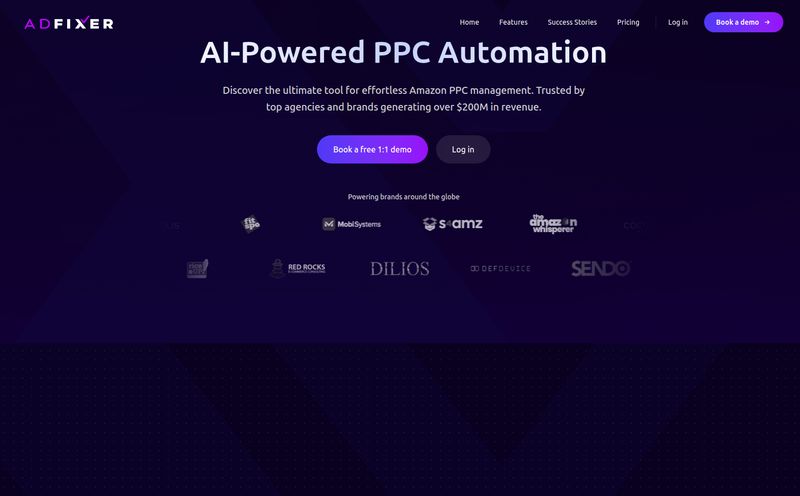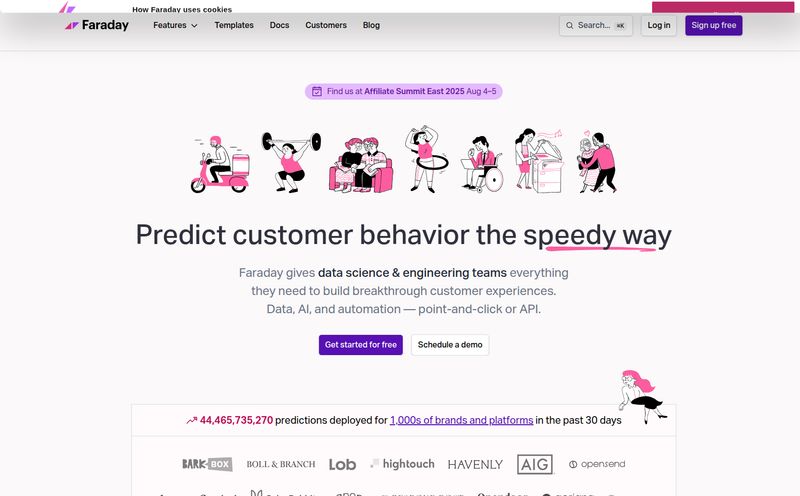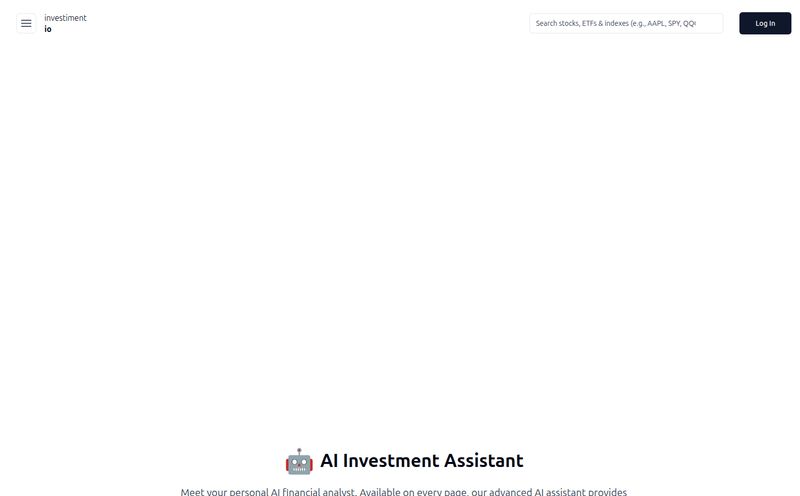As an SEO and marketing pro, I’ve got a love-hate relationship with strategic frameworks. On one hand, they’re the bedrock of any good plan. SWOT, Porter's Five Forces, PESTEL... they’re the classics for a reason. On the other hand, oh my god, the sheer effort of starting one from scratch can be a total drag. Staring at a blank PowerPoint slide with those six dreaded letters—P-E-S-T-E-L—can feel like being asked to climb a mountain before you've even had your morning coffee.
So, when I stumbled upon an AI PESTEL Analysis Generator that promised to do the heavy lifting for me, my interest was piqued. And my skepticism. We're living in a flood of AI tools right now, each one promising to change my life, organize my sock drawer, and write my emails. Most of them are… fine. But a tool that can instantly map the entire external macro-environment of a business? That felt like a pretty bold claim.
Naturally, I had to take it for a spin.
First Off, What Even is a PESTEL Analysis, Anyway?
Before we get into the tech, let's have a quick, non-textbook refresher. Think of a PESTEL analysis as a 30,000-foot view of the world your business lives in. It's about looking outside your company walls to see what's coming your way. It’s like checking the weather, the traffic, and the local events before you head out on a big road trip. You need to know what you're driving into.
It breaks down into six key areas:
- Political: How government policies, regulations, and political stability can mess with your business. Think taxes, trade restrictions, or a new subsidy for your industry.
- Economic: The big money stuff. Inflation, exchange rates, economic growth, and consumer spending power. If people have less money, they're probably not buying your luxury artisanal dog food.
- Social: This is all about people and culture. Trends, demographics, lifestyle changes, and consumer attitudes. The rise of veganism, the work-from-home shift, you name it.
- Technological: New gadgets, automation, R&D, and the pace of technological change. Is there a new piece of software that makes your main service obsolete? Or one that could 10x your productivity?
- Environmental: The green stuff. Climate change, weather patterns, sustainability pressures, and environmental regulations. This has become massively important in recent years.
- Legal: The specific laws you have to follow. Consumer protection laws, employment laws, safety standards... the boring but incredibly important stuff that can land you in hot water if you ignore it.
Doing this properly takes time. Research. Brainpower. It’s a process. Or... is it?
Enter the AI PESTEL Analysis Generator
The tool I found has a beautifully simple premise. There's one box. You write a brief description of your company in it. You click a button that says "GENERATE PESTEL ANALYSIS." And then, magic supposedly happens.
It spits out a clean, color-coded PESTEL analysis, with each of the six factors populated with AI-generated insights specific to the business you described. Even better, you can click into any of the fields to edit them and then download the whole thing as an image. Simple. Too simple?

Visit AI PESTEL Analysis Generator
Putting It to the Test: A Real-World Walkthrough
To give this a fair shake, I invented a business. Let's call it "Root & Stem," a hypothetical small business in a mid-sized city that sells sustainably-sourced houseplants and offers local, eco-friendly delivery via electric bike.
Here’s the description I fed the machine:
"Root & Stem is a small retail business based in Portland, Oregon, that sells a wide variety of indoor houseplants, succulents, and cacti. We focus on sustainability by sourcing from local growers and offering carbon-neutral delivery using electric bicycles. Our target audience is millennial and Gen Z urban dwellers looking to bring nature into their small living spaces."
I hit generate and waited. A few seconds later, poof. A full PESTEL analysis appeared. Honestly, I was pretty impressed with the first draft.
- The Political section mentioned local green business incentives and potential urban zoning laws for retail spaces.
- Economic pointed to the disposable income of its target demographic and the rising costs of fuel (which, ironically, is a plus for its e-bike delivery model).
- Social was spot-on, mentioning the growing wellness trend, the desire for biophilic design (bringing the outdoors in), and the social media trend of being a "plant parent."
- Technological brought up e-commerce platforms and the importance of social media marketing tools like Instagram and TikTok.
- Environmental touched on the growing consumer demand for sustainable products and the risks of plant diseases related to climate shifts.
- And Legal flagged things like business licensing and consumer rights laws.
It wasn't perfect, but as a starting point? It was more than I expected.
The Good, The Bad, and The... AI-ish
After playing with it for a while, I’ve got some solid takeaways. This tool isn’t a magic wand, but it’s a heck of a magic marker for your whiteboard session.
What I Genuinely Liked
The speed is the most obvious win. It takes what could be hours of initial research and brainstorming and condenses it into about 30 seconds. That alone is a huge value proposition. It completely obliterates the "blank page problem." The output is also incredibly structured, giving you a ready-made framework to build upon. For someone new to business strategy, this is fantastic. The fact that the fields are editable is also a game-changer. The AI gets you 70% of the way there, and you can easily tweak, add, or delete points to get it to 100%. And being able to download it as a clean image for a presentation? Chef's kiss. No more wrestling with clunky SmartArt in PowerPoint.
Where It Stumbles
Let's be clear: it's a starting point, not the finished product. The biggest weakness is the classic GIGO principle—Garbage In, Garbage Out. If you give it a vague, one-sentence description of your company, you'll get a vague, generic analysis back. The quality of the output is directly proportional to the quality of your input.
You still need a human brain to check its work. The AI might miss some of the deep, specific nuances of your local market or a cutting-edge technological shift in a niche industry. It provides a basic PESTEL analysis, so don't expect it to uncover a secret government report that will upend your entire sector. It's a smart assistant, not a seasoned strategist. You still have to do the critical thinking. It's the spark plug, not the whole engine.
Who is This AI Tool Actually For?
So who should be bookmarking this thing immediately? In my opinion, its perfect for:
- Students: A total lifesaver for business and marketing homework.
- Startups & Small Business Owners: When you're the CEO, CMO, and janitor all at once, you dont have time for a week-long strategy session. This gives you a quick and dirty environmental scan in minutes.
- Marketers & Content Creators: Fantastic for brainstorming campaign angles that tap into current social or economic trends.
- Junior Analysts: A great way to get a first draft on the table for your boss to review. It makes you look prepared and efficient.
If you're a director at a Fortune 500 company preparing a multi-million dollar business case, this probably isn't your final research tool. But even then, it could be a handy way to kickstart your team's thinking.
Let's Talk About the Price
Here’s the best part. From what I can see on the site, this tool is free. There's no pricing page, no credit card form, no "start your 7-day trial." In an age where every useful tool seems to be hidden behind a subscription, a genuinely useful and free tool feels like finding a unicorn. It's a refreshing change of pace, and it makes it a total no-brainer to try.
Frequently Asked Questions
- Is the AI PESTEL Analysis Generator really free?
- As of my review, yes, it appears to be completely free to use. There are no visible costs or subscription requirements to generate an analysis.
- How accurate is the AI-generated analysis?
- It's surprisingly accurate for a first draft! However, its accuracy depends heavily on how detailed your company description is. Always treat it as a starting point and use your own expertise to verify and refine the points.
- Can I use the output in a business presentation?
- Absolutely. The tool allows you to download your final, edited analysis as an image file, which is perfect for dropping directly into PowerPoint, Google Slides, or reports.
- What's the difference between this and a SWOT analysis?
- Great question. PESTEL focuses only on external macro-environmental factors (things you can't control, like the economy or new laws). A SWOT analysis looks at both external (Opportunities and Threats) and internal factors (Strengths and Weaknesses). They're often used together; you might use a PESTEL analysis to help identify the Opportunities and Threats for your SWOT.
- Does the tool save my company data?
- This is a valid concern. Based on the tool's simple interface, it doesn't appear to save or store your data. It generates the analysis on the fly. However, for sensitive information, it's always best practice to review the website's privacy policy.
Final Thoughts: A Tool, Not a Replacement
So, is this AI PESTEL Analysis Generator worth it? Given that it's free and fast, the answer is a resounding yes. It's not going to do your job for you. It won't replace a skilled strategist or deep, nuanced market research. But that's not its purpose.
Its purpose is to be a powerful brainstorming partner that demolishes the initial friction of a major strategic task. It saves time, provides structure, and gets the ball rolling. In an industry where time is money and momentum is everything, that’s not just a nice feature—it’s a massive advantage.
Go give it a try. The next time you're faced with that blank PESTEL template, you'll be glad you have this little AI assistant in your back pocket.
Reference and Sources
For a more academic deep dive into the PESTEL framework, I'd recommend checking out the explanation from a trusted source like Investopedia. It provides a great foundation for understanding the theory behind the tool.



